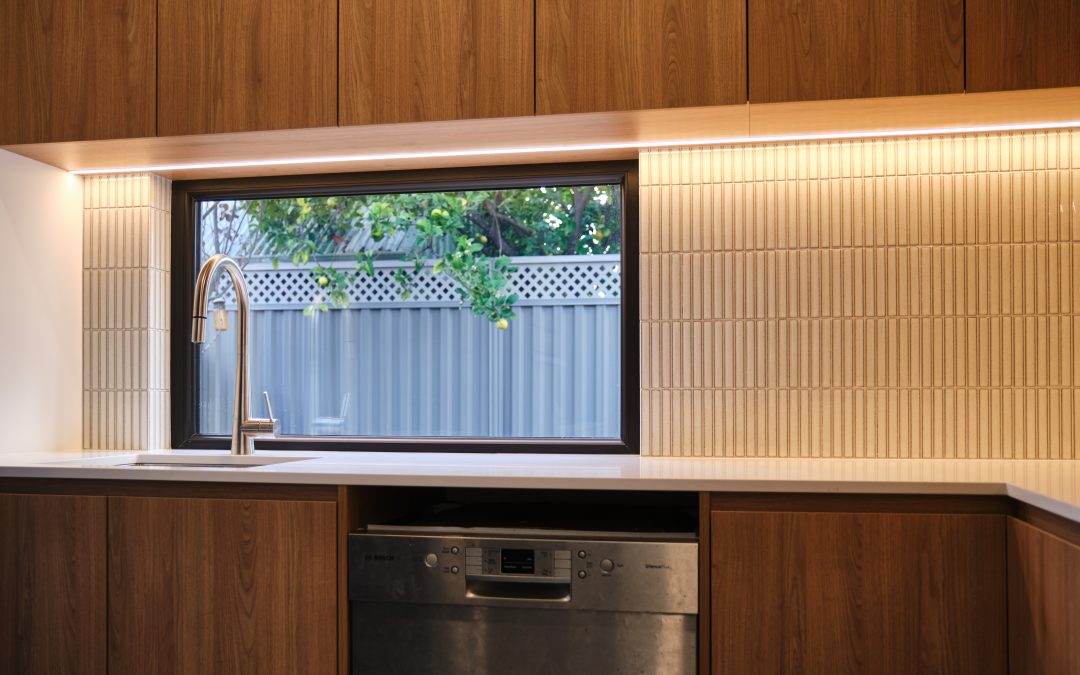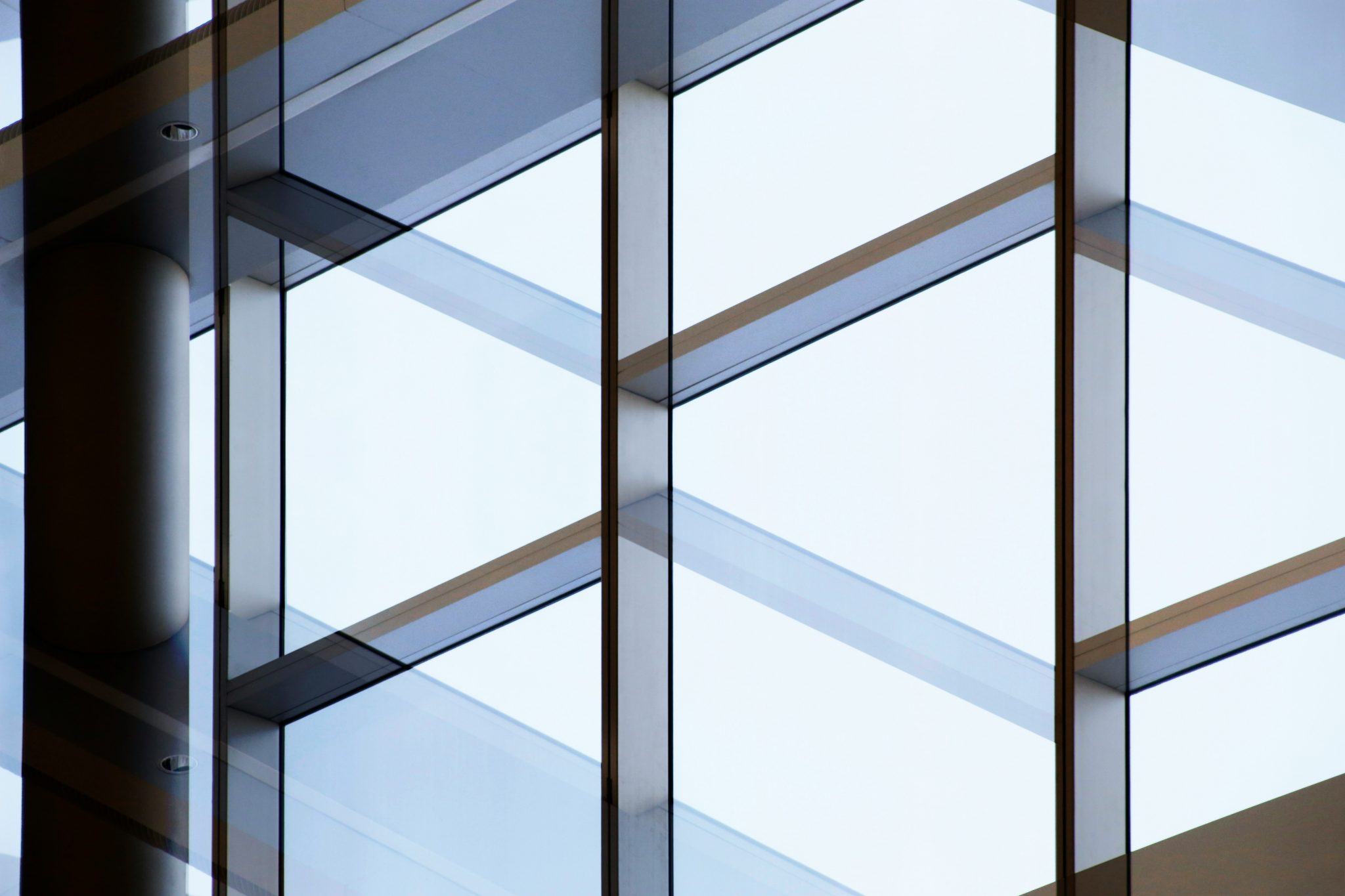Windows don’t just let light into the house; they are a crucial driver of the inside temperature of your home.
They let heat in during the summer, and are primarily where we lose a lot of warmth during winter. However, you can create a more comfortable, more environmentally friendly home with the correct glazing choice.
High-performance glazing plays a crucial role in Passive House principles, and there are three main types to choose from.
The different types of high-performance glazing
Single-glazing refers to one solitary pane of glass that creates a barrier between the outdoors and your indoor environment. It isn’t particularly energy efficient.
In high-performance homes, we opt for more high-performance glazing.
Low-E glass
Low-E glass, or low emissivity glass, is a type of high-performance glass designed to reduce the amount of infrared and UV radiation entering your home through the window.
It is a standard clear glass pane with a special super-thin transparent coating on one side. This coating is spectrally selective, which means it’s engineered to reduce specific types of infrared and UV radiation passing through the glass, reducing heat transfer.
Double glazing
A double-glazed window features two panes of glass. But it’s not just two panes arranged in a frame: they’re separated by a gap that is sealed airtight and filled either with air or an insulating gas, usually argon. Double glazing generally significantly out performs single pane Low-E glass.
The gap between the two glass panels acts as an insulating barrier, reducing the heat passed between the outside and inside of the window.
You can also find high-performance double glazing, which is a combination of double glazing with Low-E glass. These windows are more common and cost-effective than triple glazing in Perth.
Triple glazing
Triple glazing introduces another pane of glass into the equation. It allows another sealed cavity also to be filled with the same insulating gas. Adding this second air pocket between the outside and inside of the house helps lower the window’s thermal conductivity. However, they may not be the most cost-effective option as they can be 30-50% more than double-glazed windows and generally aren’t required for the Perth climate.
The advantages of double-glazed windows for Perth conditions
Double-glazed windows have some big advantages and benefits over a traditional single pane.
Improved energy efficiency
By adding that essential pocket of insulating gas between two panes of glass, double glazing can reduce your heat gain or loss by up to 30%, meaning you’re not so reliant on your air conditioning to cool your spaces down on those hot summer days.
A more comfortable climate
Double glazing significantly reduces the heat transferred through your windows, enabling better climate control indoors. You only need to run your air conditioner for a short time, and you can keep your home cooler or warmer for longer.
Reduces outdoor noise
With its insulating internal cavity, double glazing also effectively reduces the noise inside your home.
A Closer Look at High-Performance Double Glazing
Along with double-glazed windows, you can also find high-performance double-glazing. In simple terms, high-performance double glazing combines double glazing with Low-E glass. This is more common and cost-effective than triple glazing in Perth.
Improved air quality
Double-glazed windows create a more effective barrier against external temperatures, minimising the difference between the inner glass panes. This reduces the chance of condensation forming, and with no condensation, there’s no chance for mould to grow. This creates a cleaner, healthier indoor environment.
Even better energy efficiency
Adding that extra pocket of gas within your window reduces heat transfer even further, making high-performance double glazing a more practical option for locations that face extreme temperatures.
Optimum noise reduction
The added pocket of gas and third layer of glass dampen sound transfer even further, making double-glazed windows an excellent option for buildings and houses located in noisy areas.
Improved security
It might sound trivial, but adding an extra layer of glass to your windows makes it harder for people to break in. Added layers of glass act as a deterrent to would-be intruders.
Prevents Mold and Mildew
High-performance double glazing keeps the inner pane warmer by reflecting heat into the room. This reduces the temperature difference between the glass and indoor air, minimising condensation and preventing moisture-related damage or mould growth.
Alternatives to double glazing: The benefits of Low-E glass
Improved insulation
While it’s not as effective as double glazing, low-E glass provides far better insulation than an uncoated glass pane, helping to maintain the temperature inside your home.
Protection against UV rays
Low-E glass can provide some protection against UV rays, causing less damage to curtains, carpets, furniture, and people.
Reduces glare
With its clever coating, low-E glass can reduce the glare from some external light sources.
Are high-performance glazed windows energy efficient?
Energy efficiency in windows is measured in a U-value, a calculation that determines how effectively the window holds cool or warm air in, and non-solar loss or gain. The lower the U-value, the more effective the window is at limiting heat flow and, therefore, the better it is for insulation.
Do high-performance glazed windows reduce noise?
Double and triple glazing also works to reduce noise inside your home.
With single glazing, sound waves hit the glass, and the vibrations travel through it quickly, transferring them into similarly sized sound waves on the other side. There’s not much change in sound volume.
Double glazing and triple glazing act as insulation for noise, too. The sound vibrations have to pass through the gas inside the window cavity, dampening and reducing the vibration when it leaves the inside pane.
Double glazing can reduce outside sound by up to 30 decibels and triple glazing by up to 50 decibels. For example, this would mitigate loud, heavy traffic noises to the equivalent volume of a whisper.
Can you tint high-performance windows?
Yes, you can tint high-performance windows. However, any tinting should be applied to the exterior window surface. This way, it doesn’t contact any existing low-E coating.
However, we don’t recommend doing this yourself. Contact a glazier who has experience with high-performance glass.
Should I include high-performance glazed windows in my new build?
When building a new home, you want to create the most comfortable environment possible. The windows you choose are a big part of this.
Opting for high-performance windows can help to create a more comfortable, energy-efficient home.
Contact our team at TrueLine Homes to learn more about utilising high-performance glazing in your new build.


